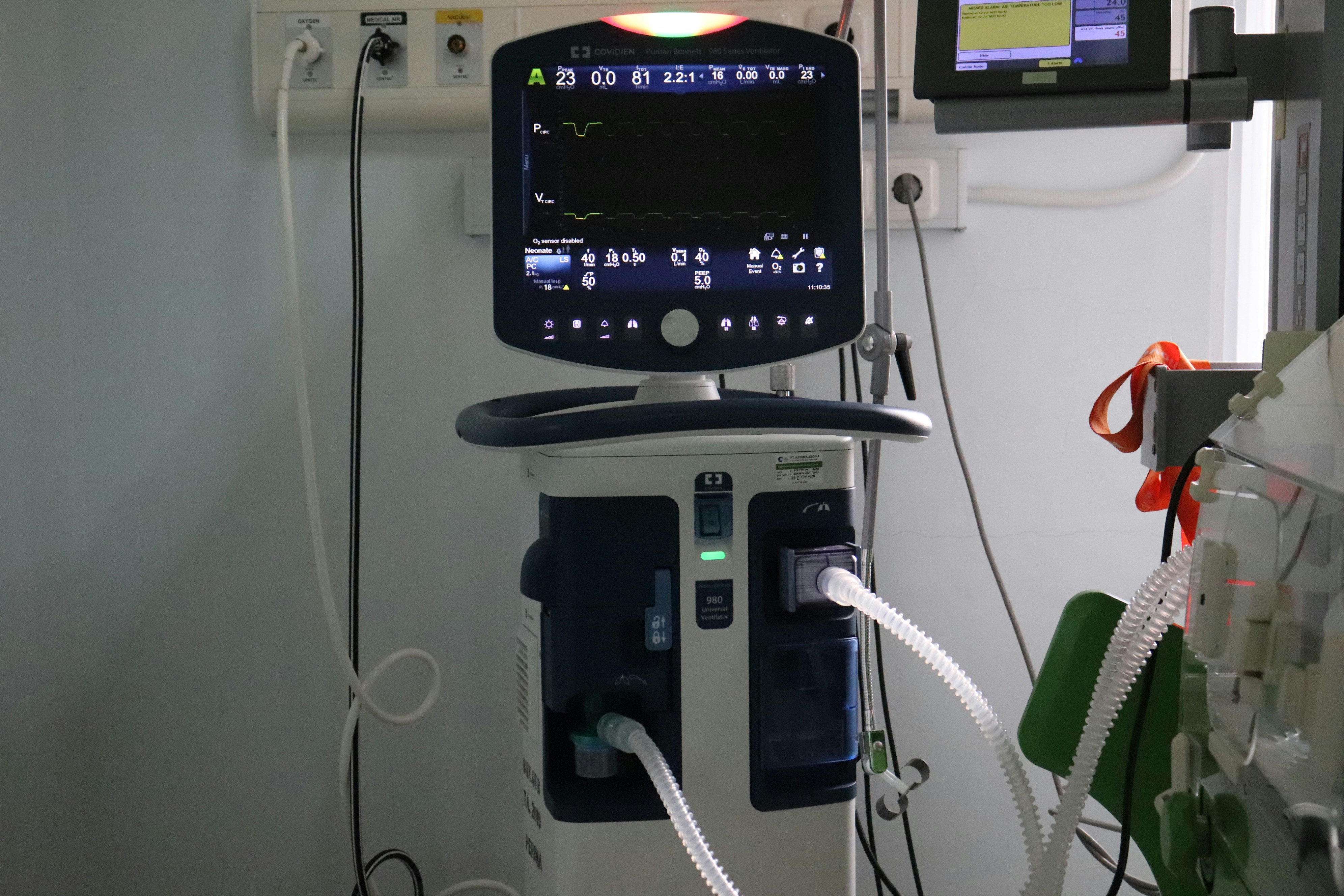
Medical Technology Team Structures Explained: Who Does What in a Modern MedTech Department
Medical technology (MedTech) spans everything from wearable health devices and surgical robots to diagnostic imaging, in-vitro diagnostics (IVD), digital therapeutics, AI-driven triage, and Class I–III medical devices. In the UK, the sector touches NHS care pathways, private providers, and global markets—with stringent expectations for safety, clinical evidence, cybersecurity, and data privacy. As ventures scale from prototype to regulated product, clear team structures become the difference between promising pilots and licensed, market-ready devices.
Whether you’re hiring your first clinical specialist or applying for a role in QA/RA, this guide explains who does what in a modern MedTech department, how functions collaborate across the product lifecycle, UK-typical skill sets and salaries, common pitfalls, and best practices for building a resilient team.
Why Team Structure Matters in MedTech
MedTech success depends on three pillars: clinical safety, regulatory compliance, and commercial viability. Each pillar cuts across multiple disciplines—engineering, clinical affairs, quality and regulatory (QA/RA), cybersecurity, data, manufacturing, and market access. Without well-defined roles:
Clinical risk management can weaken, risking harm and regulatory intervention.
Documentation becomes chaotic, delaying submissions and audits.
Cybersecurity and data protection gaps can derail NHS adoption.
Manufacturing scale-up falters due to missing process ownership.
Sales cycles stall if health economics and market access are neglected.
Clear ownership, standard operating procedures (SOPs), and disciplined hand-offs ensure safety, speed, and credibility.
Core Roles in a Modern MedTech Department
1) Product Manager (MedTech)
The product manager translates clinical needs, user workflows, and reimbursement realities into a coherent product strategy. They own value propositions, prioritise features, and set success metrics that satisfy clinicians, patients, and regulators.
What they do: conduct discovery with clinicians and NHS procurement, shape roadmaps, define clinical claims, coordinate releases, and align design controls with business milestones.Skills: stakeholder interviewing, requirements writing, risk/benefit framing, familiarity with medical device regulations and evidence requirements.
2) Clinical Affairs Specialist / Clinical Scientist
Clinical affairs bridges the device and real-world patient care. They interpret clinical workflows, design studies, and ensure claims are supported by evidence.
What they do: plan and execute clinical investigations or performance evaluations, design protocols, oversee ethics submissions, liaise with clinical sites, monitor adverse events, and gather clinician feedback for usability improvements.Skills: good clinical practice (GCP), statistics for study design, knowledge of NHS pathways, safety reporting, and human-factors considerations.
3) Regulatory Affairs (RA) Manager
Regulatory affairs ensures your device meets the legal requirements for market access—UKCA in Great Britain, CE marking in the EU, and other jurisdictions as you expand.
What they do: define the device classification and intended use, build the technical file, maintain device documentation, engage with Approved Bodies or Notified Bodies, manage submissions, vigilance, and post-market surveillance plans.Skills: device classification rules, standards mapping, technical writing, change control, understanding of clinical evaluation and performance data.
4) Quality Assurance (QA) Lead
QA designs and maintains the quality management system (QMS) that underpins safe design, manufacture, and after-sales support.
What they do: author and maintain SOPs, run internal audits, lead CAPA, oversee design controls, risk management files, supplier quality, incoming inspection, device history records, and production release.Skills: QMS design, root-cause analysis, document control, risk management frameworks, training and audit readiness.
5) Risk Management / Safety Engineer
Risk specialists ensure hazards are identified, risks are reduced as far as possible, and residual risks are acceptable and communicated.
What they do: lead hazard analysis, FMEA/FTA, clinical risk-benefit assessments, usability risk analyses, and trace mitigations through design outputs and verification.Skills: systematic hazard thinking, human-factors integration, strong documentation discipline.
6) Human Factors / Usability Engineer
Human-factors (HF) ensures devices can be used safely and effectively by intended users in intended environments.
What they do: user research, task analysis, formative and summative usability testing, use-error analysis, labelling and IFU improvements, and HF input to risk files.Skills: study design, observational methods, interaction design for clinical contexts, synthesis of findings into design requirements.
7) R&D Engineer (Mechanical, Electrical, Software)
R&D translates requirements into design outputs, prototypes, and verified product. Teams are typically cross-functional across electronics, firmware, mechanics, and software.
What they do: system architecture, prototyping, design for manufacturing (DFM), verification planning, traceability from requirements to tests, and design reviews.Skills: CAD/PCB/firmware/software engineering, test fixture design, documentation discipline, collaboration with QA/RA and HF.
8) Software Engineer (Medical Device Software / SaMD)
Software can be part of a device or itself be the device (Software as a Medical Device, SaMD).
What they do: design and implement software architectures, establish software life-cycle files, code to safety standards, build automated tests, manage configuration and release, integrate cybersecurity by design, and support clinical validation environments.Skills: strong engineering foundations, unit/integration testing, CI/CD, secure coding, performance and reliability thinking.
9) AI/ML Engineer or Data Scientist (if applicable)
When algorithms influence diagnosis, triage, or therapy, model transparency, drift monitoring, and clinical validation are crucial.
What they do: define datasets and labelling, handle bias and representativeness, train and validate models, establish model versioning, monitor performance in the field, and support post-market updates with change justification. Skills: ML engineering, experiment tracking, statistical validation, explainability techniques, privacy-preserving methods.
10) Cybersecurity Engineer (Device & Cloud)
Healthcare is a prime target for cyber attacks, and device compromise can be safety-critical.
What they do: threat modelling, secure boot and updates, identity and access management, encryption, secure communications, vulnerability handling, SBOM management, and incident response planning.Skills: secure design patterns, cryptography, vulnerability scanning, secure cloud architectures, coordination with QA/RA for disclosure.
11) Data Protection / Privacy Lead
If you process personal health data, privacy is central to adoption.
What they do: define data flows and lawful bases, oversee DPIAs, minimise data collection, draft privacy notices, coordinate subject rights, and align retention and deletion with commitments.Skills: privacy law literacy, information governance, ability to translate legal requirements into engineering controls and product UX.
12) Verification & Validation (V&V) Engineer
V&V proves the design meets requirements and the product meets user needs.
What they do: build verification protocols, test benches, and automated suites; run validation with representative users and environments; manage test reports, traceability, and defect resolution. Skills: test design, statistics, traceability matrices, strong reporting.
13) Manufacturing / Operations Engineer
From pilot lots to full production, operations keep quality stable and costs under control.
What they do: process validation (IQ/OQ/PQ), supplier qualification, line layout, yield improvement, device history records, and change control when updating materials or methods. Skills: lean manufacturing, statistical process control, reliability engineering, supplier management.
14) Supply Chain & Supplier Quality
Suppliers and external manufacturers must meet your quality bar.
What they do: supplier audits, quality agreements, incoming inspection, non-conformance handling, and continuity planning for critical parts. Skills: vendor management, negotiation, risk assessment, defect analytics.
15) Post-Market Surveillance (PMS) & Vigilance
Safety doesn’t end at launch. PMS closes the loop between field performance and product updates.
What they do: collect and trend complaints, handle adverse event reporting, run post-market clinical follow-up (PMCF/PMCF-like activities), and drive CAPA. Skills: analytics, medical terminology, root-cause discipline, clear reporting.
16) Health Economics & Market Access (HEMA)
Even safe, effective devices fail if they can’t be paid for.
What they do: model budget impact and cost-effectiveness, craft evidence for commissioners, tailor value dossiers, and support pilots with NHS partners. Skills: health-economic modelling, payer engagement, outcome definition, data storytelling.
17) Commercial & Clinical Sales (KAMs / Clinical Specialists)
Commercial teams with clinical credibility are vital for trials, adoption, and scaling.
What they do: educate clinicians, run evaluations, collect feedback, configure deployments, and support training, while coordinating with PMS to capture real-world evidence.Skills: clinical fluency, empathy for workflow, objection handling, escalation to technical teams.
18) MedTech Project Manager / Programme Manager
A single owner for scope, schedule, budget, and risk keeps regulated projects on track.
What they do: integrated plans across RA/QA, R&D, V&V, operations, and commercial; change control boards; steering committees; risk registers; and dependency mapping. Skills: regulated project delivery, stakeholder management, practical problem-solving.
How These Roles Collaborate Across the MedTech Lifecycle
Concept & Feasibility
Product management partners with clinicians to clarify needs and intended use. Clinical affairs and RA advise on claims and device classification. Risk and HF begin early hazard and use-error thinking. R&D prototypes to test feasibility; cybersecurity and privacy sketch security and data flows.
Design & Development
R&D formalises requirements; HF runs formative studies; QA establishes design controls and document templates; risk owners maintain the risk file; software and AI teams set architecture, coding standards, and verification plans; RA refines regulatory strategy and standards mapping.
Verification & Validation
V&V proves requirement conformance; HF runs summative usability; clinical affairs runs studies or performance evaluations; cybersecurity executes threat modelling and penetration tests; QA leads reviews and ensures traceability.
Submission & Approval
RA compiles the technical file; QA ensures QMS evidence; clinical affairs contributes clinical evaluation reports; product and HEMA prepare launch readiness; leadership aligns risk, claims, and labelling.
Manufacturing & Scale-Up
Operations validate processes; supplier quality locks down incoming materials; DHRs and batch records go live; V&V supports production test automation; RA ensures change control; commercial readies pilots with hospitals.
Launch & Post-Market
PMS collects real-world data; vigilance manages incidents; AI/ML monitors drift; cybersecurity handles disclosures; product revises claims or IFU; HEMA updates value stories; RA navigates renewals and scope changes.
UK-Typical Skills and Backgrounds
Engineering & Science: biomedical, mechanical, electronic, software, data science, human-factors, materials.
Clinical & Trials: research nurses, clinical scientists, trial coordinators, statisticians.
Regulated Delivery: quality managers, RA specialists, project managers with device experience.
Security & Data: cybersecurity engineers, privacy professionals, cloud architects.
Commercial & Access: market access, KAMs with clinical backgrounds, product marketing with health economics literacy.
Degrees are common, but demonstrable regulated delivery, audit readiness, and clear documentation are often decisive.
Salary Ranges (Indicative, UK)
Clinical Affairs / Clinical Scientist: ~£45k–£75k (senior higher)
Regulatory Affairs Manager: ~£55k–£95k
Quality Assurance Lead: ~£55k–£90k
Risk / Safety Engineer: ~£50k–£85k
Human-Factors Engineer: ~£45k–£80k
R&D Engineer (Mech/Elec/FW/SW): ~£45k–£85k (principal higher)
Software (SaMD) / ML Engineer: ~£55k–£100k+
Cybersecurity Engineer: ~£60k–£100k
Verification & Validation Engineer: ~£45k–£80k
Manufacturing / Ops Engineer: ~£50k–£90k
Supplier Quality / Supply Chain: ~£45k–£85k
HEMA / Market Access: ~£55k–£100k
PMS / Vigilance Lead: ~£50k–£85k
Product Manager (MedTech): ~£60k–£105k
Programme Manager: ~£65k–£110k
Head of QA/RA or VP R&D: £100k+
Ranges vary by device class, location, and company stage.
Common Pitfalls (and How to Avoid Them)
Late human-factors and clinical input - Bring HF and clinical affairs into ideation; treat usability and workflow fit as safety features, not polish.
Weak risk traceability - Keep a living risk file; trace hazards → mitigations → verification; link to usability and cybersecurity risks.
Documentation debt - Adopt document control early; use templates and a QMS that scales; define owners for each file and section.
Cybersecurity bolted on - Threat-model from day one; design secure update pipelines; maintain an SBOM; plan coordinated vulnerability disclosure.
Ambiguous device boundary - Define what is “the device” (hardware, app, cloud) and align compliance and labelling accordingly.
Post-market neglect - Resource PMS and vigilance; treat real-world performance as a feature stream; use feedback loops for claims and IFU updates.
No reimbursement strategy - Engage HEMA early; design evidence to satisfy commissioners; align endpoints with payer value.
Day-in-the-Life Snapshots
Early-Stage Digital Therapeutic (SaMD) Morning: Product manager and clinical affairs finalise inclusion criteria for a real-world evaluation. Software and ML teams harden an inference service; V&V writes automated test scripts. Midday: HF runs a formative study on onboarding and consent screens; privacy updates DPIA; RA confirms claim language. Afternoon: QA closes a CAPA on a defect that presented as a use error; cybersecurity reviews dependency updates; PMS drafts a post-launch complaint handling flow.
Class IIb Hardware + Software Device Morning: R&D hosts a design review on a revised sensor head; risk owners confirm mitigation coverage; supplier quality qualifies a new plastics manufacturer. Midday: V&V executes a verification protocol; operations runs an OQ on a new assembly step; RA prepares responses to queries. Afternoon: Market access meets an NHS trust to discuss pilot metrics; PMS analyses complaint trends; leadership reviews launch readiness.
FAQs
Is a medical device product manager different from a tech PM?Yes. They must understand clinical context, claims, risk controls, and evidence needs, and coordinate tightly with QA/RA and HF.
Do we need an HF specialist if clinicians help with design?Clinician feedback is vital, but HF brings structured methods and summative validation needed for compliance and safety evidence.
How early should RA and QA be involved?From day one. Early classification, claims, and standards mapping prevent rework and delays.
How do AI features change the team?You’ll need ML governance: curated datasets, bias checks, versioned models, drift monitoring, and change-management that ties into RA/QA and PMS.
Can we outsource manufacturing and still meet quality expectations?Yes, but you remain responsible. Qualify suppliers, set quality agreements, audit regularly, and maintain robust incoming inspection.
Building a High-Performance MedTech Team: Best Practices
Name accountable owners for risk, HF, RA, QA, cybersecurity, and PMS.
Adopt a scalable QMS early—lightweight but disciplined—so evidence accrues continuously.
Define the device boundary and data flows clearly, including cloud components.
Integrate HF and clinical affairs into sprint planning; treat usability risks as safety risks.
Automate V&V where possible; maintain traceability from requirements to tests.
Invest in supplier quality and establish change-control early.
Plan market access in parallel with development; align endpoints with payer priorities.
Bake in cybersecurity with threat modelling, SBOMs, and secure update paths.
Resource PMS and vigilance with analytics and feedback loops that drive product updates.
Communicate relentlessly—weekly cross-functional checkpoints and documented decisions reduce churn.
Final Thoughts
Modern MedTech is an orchestration of specialists united by safety, evidence, and value. When clinical affairs, RA/QA, risk, HF, engineering, cybersecurity, operations, and market access move in sync, devices reach patients faster and perform reliably in the wild. For candidates, understanding who does what helps you target roles and develop relevant skills. For employers, clarity of structure and disciplined collaboration will keep your innovations audit-ready, scalable, and clinically valuable.


